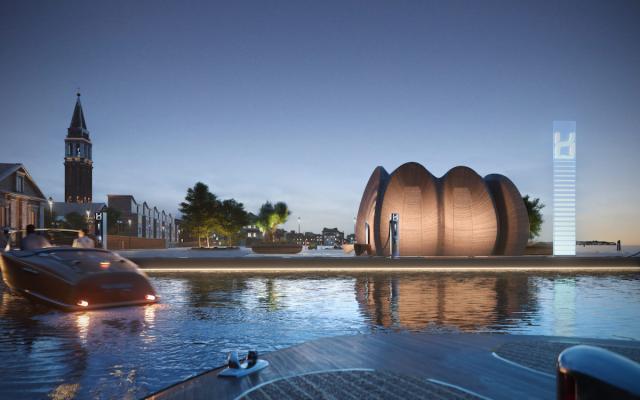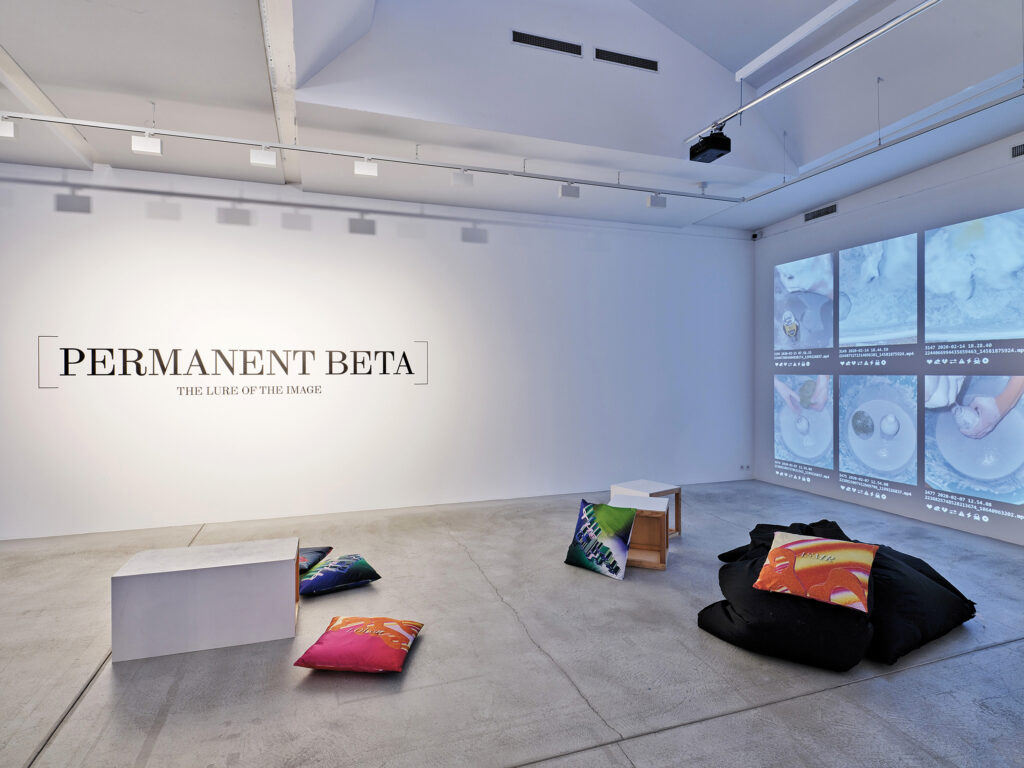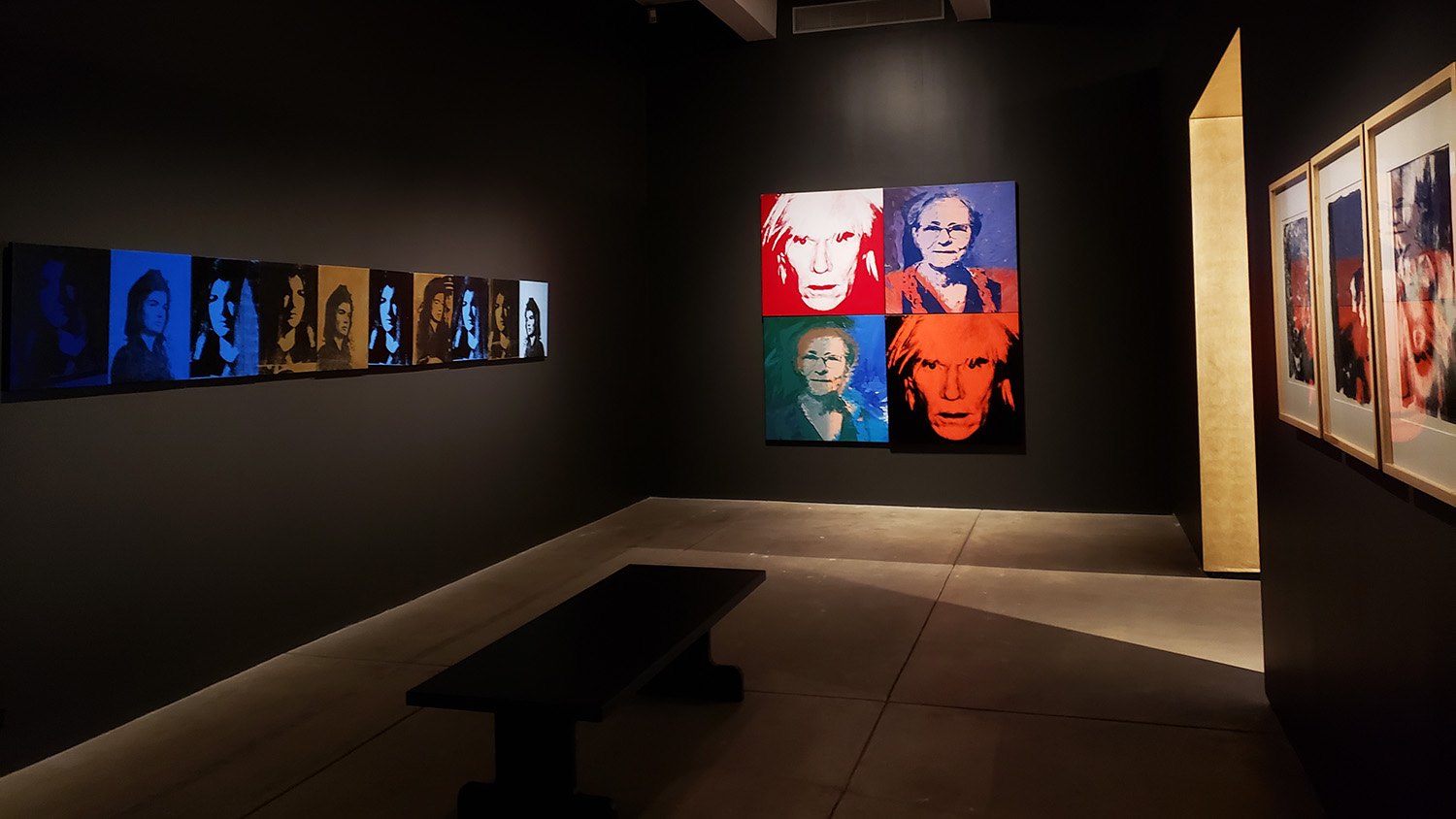Movement
2014 - Film & Video (Film & Video)
Li Ming
In the eight-channel video installation Movement , Li Ming uses his body as a prop to interact with different means of transportation. Each channel features footage of the artist moving forward, jumping between various modes of transportation that weave in and out of the frame in a carefully orchestrated choreography. As the artist descends from the loader bucket of a moving construction tractor, he jumps onto a skateboard which he then discards as he lays on top of a suitcase that continues rolling forward. Running, skating, sliding on a trolley, chasing lifts from bicycles, trucks, excavators, tuk-tuks, all form part of his journey. The synchronization of the eight videos binds the parallel narratives together, creating the effect of the artist chasing his own image in an endless loop unravelling across the same city-scape. The use of repetition and seriality that and deceptive impression of linearity, echoes the illusion of time/space that is commonly used in Hollywood films.
Li Ming creates video, installation, performance and photography that explores the relationships between individuals and society through the lens of their interactions with daily objects and their direct environments. In 2008, Li Ming founded the art collective Double Fly Art Center, known for enacting humorous and anarchic public actions such as staging a mock bank robbery and faking orgasms while getting their feet massaged. The collective’s focus on improvisation, spontaneity and the nonsensical nature of their endeavours have become an important influence for on Li Ming’s practice, who in his recent videos, has relied on his own body to reveal hidden connections between space, time, himself and various social issues he perceives around him. His videos often have a purposefully grainy, shaky, and near amateur quality, reflecting the carefree ethos that defines his practice. Entangled with his playful and experimental approach there are always underlying questions, social investigation and commentary — from the way we interact with technology, to Chinese politics, to spatial and temporal questions.
Colors:
Related works featuring themes of: » Abstract, » Allover Composition, » Black and White, » Calligraphic, » Chinese
» see more

© » KADIST
Mark Bradford
2012This untitled work from 2012 is a print originally made as part of the Wattis Institute for Contemporary Art’s artist limited edition series...

© » KADIST
Chen Chieh-Jen
2010Empire’s Borders II – Passage and Empire’s Borders II – Workers are from the three-channel film installation Empire’s Borders II – Western Enterprise, Inc...
Other related works, blended automatically
» see more

© » KADIST
Mark Bradford
2012This untitled work from 2012 is a print originally made as part of the Wattis Institute for Contemporary Art’s artist limited edition series...

© » KADIST
Scott Reeder
2013Reeder’s works often start with language—and his Pasta Paintings are no different...

© » KADIST
Raymond Pettibon
The five drawings included in the 101 Collection are representative of Pettibon’s characteristic cartoonish style...
Related works sharing similar palette
» see more

© » ART & OBJECT
Zaha Hadid Architects Unveil Hydrogen Refueling Station, and More News | Art & Object Skip to main content Subscribe to our free e-letter! Webform Your Email Address Role Art Collector/Enthusiast Artist Art World Professional Academic Country USA Afghanistan Albania Algeria American Samoa Andorra Angola Anguilla Antarctica Antigua & Barbuda Argentina Armenia Aruba Ascension Island Australia Austria Azerbaijan Bahamas Bahrain Bangladesh Barbados Belarus Belgium Belize Benin Bermuda Bhutan Bolivia Bosnia & Herzegovina Botswana Bouvet Island Brazil British Indian Ocean Territory British Virgin Islands Brunei Bulgaria Burkina Faso Burundi Cambodia Cameroon Canada Canary Islands Cape Verde Caribbean Netherlands Cayman Islands Central African Republic Ceuta & Melilla Chad Chile China Christmas Island Clipperton Island Cocos (Keeling) Islands Colombia Comoros Congo - Brazzaville Congo - Kinshasa Cook Islands Costa Rica Croatia Cuba Curaçao Cyprus Czechia Côte d’Ivoire Denmark Diego Garcia Djibouti Dominica Dominican Republic Ecuador Egypt El Salvador Equatorial Guinea Eritrea Estonia Eswatini Ethiopia Falkland Islands Faroe Islands Fiji Finland France French Guiana French Polynesia French Southern Territories Gabon Gambia Georgia Germany Ghana Gibraltar Greece Greenland Grenada Guadeloupe Guam Guatemala Guernsey Guinea Guinea-Bissau Guyana Haiti Heard & McDonald Islands Honduras Hong Kong SAR China Hungary Iceland India Indonesia Iran Iraq Ireland Isle of Man Israel Italy Jamaica Japan Jersey Jordan Kazakhstan Kenya Kiribati Kosovo Kuwait Kyrgyzstan Laos Latvia Lebanon Lesotho Liberia Libya Liechtenstein Lithuania Luxembourg Macao SAR China Madagascar Malawi Malaysia Maldives Mali Malta Marshall Islands Martinique Mauritania Mauritius Mayotte Mexico Micronesia Moldova Monaco Mongolia Montenegro Montserrat Morocco Mozambique Myanmar (Burma) Namibia Nauru Nepal Netherlands Netherlands Antilles New Caledonia New Zealand Nicaragua Niger Nigeria Niue Norfolk Island Northern Mariana Islands North Korea North Macedonia Norway Oman Outlying Oceania Pakistan Palau Palestinian Territories Panama Papua New Guinea Paraguay Peru Philippines Pitcairn Islands Poland Portugal Puerto Rico Qatar Romania Russia Rwanda Réunion Samoa San Marino Saudi Arabia Senegal Serbia Seychelles Sierra Leone Singapore Sint Maarten Slovakia Slovenia Solomon Islands Somalia South Africa South Georgia & South Sandwich Islands South Korea South Sudan Spain Sri Lanka St...

© » 1854 PHOTOGRAPHY
Code switching: How Fotomsuseum Winterthur became digital-first - 1854 Photography Subscribe latest Agenda Bookshelf Projects Industry Insights magazine Explore ANY ANSWERS FINE ART IN THE STUDIO PARENTHOOD ART & ACTIVISM FOR THE RECORD LANDSCAPE PICTURE THIS CREATIVE BRIEF GENDER & SEXUALITY MIXED MEDIA POWER & EMPOWERMENT DOCUMENTARY HOME & BELONGING ON LOCATION PORTRAITURE DECADE OF CHANGE HUMANITY & TECHNOLOGY OPINION THEN & NOW Explore Stories latest agenda bookshelf projects theme in focus industry insights magazine ANY ANSWERS FINE ART IN THE STUDIO PARENTHOOD ART & ACTIVISM FOR THE RECORD LANDSCAPE PICTURE THIS CREATIVE BRIEF GENDER & SEXUALITY MIXED MEDIA POWER & EMPOWERMENT DOCUMENTARY HOME & BELONGING ON LOCATION PORTRAITURE DECADE OF CHANGE HUMANITY & TECHNOLOGY OPINION THEN & NOW With the physical space closed for renovation, Fotomuseum Winterthur’s digital curator reveals how ASMR livestreams and ‘sludge content’ are keeping online momentum high Marco De Mutiis, digital curator at Fotomuseum Winterthur, wants the photography world to “stop whining”...
Related works from the » 2010's created around » Beijing, China
» see more

© » KADIST
Xiaoyun Chen
2014The central point of Vanishing Point is the most direct physiological reaction of the body to the environment...
Related artist(s) to: Li Ming » Chen Yufan, » Chen Yujun, » Cheng Ran, » Ma Qiusha, » Song Ta, » Sybella Chow, » Xu Qu, » Zhao Yao
» see more
Related works found in the same semantic group
» see more

© » KADIST
Mohamed Bourouissa
2008Temps Mort is the result of one year of mobile phone exchanges of still images and videos between the artist and a person incarcerated in prison...










